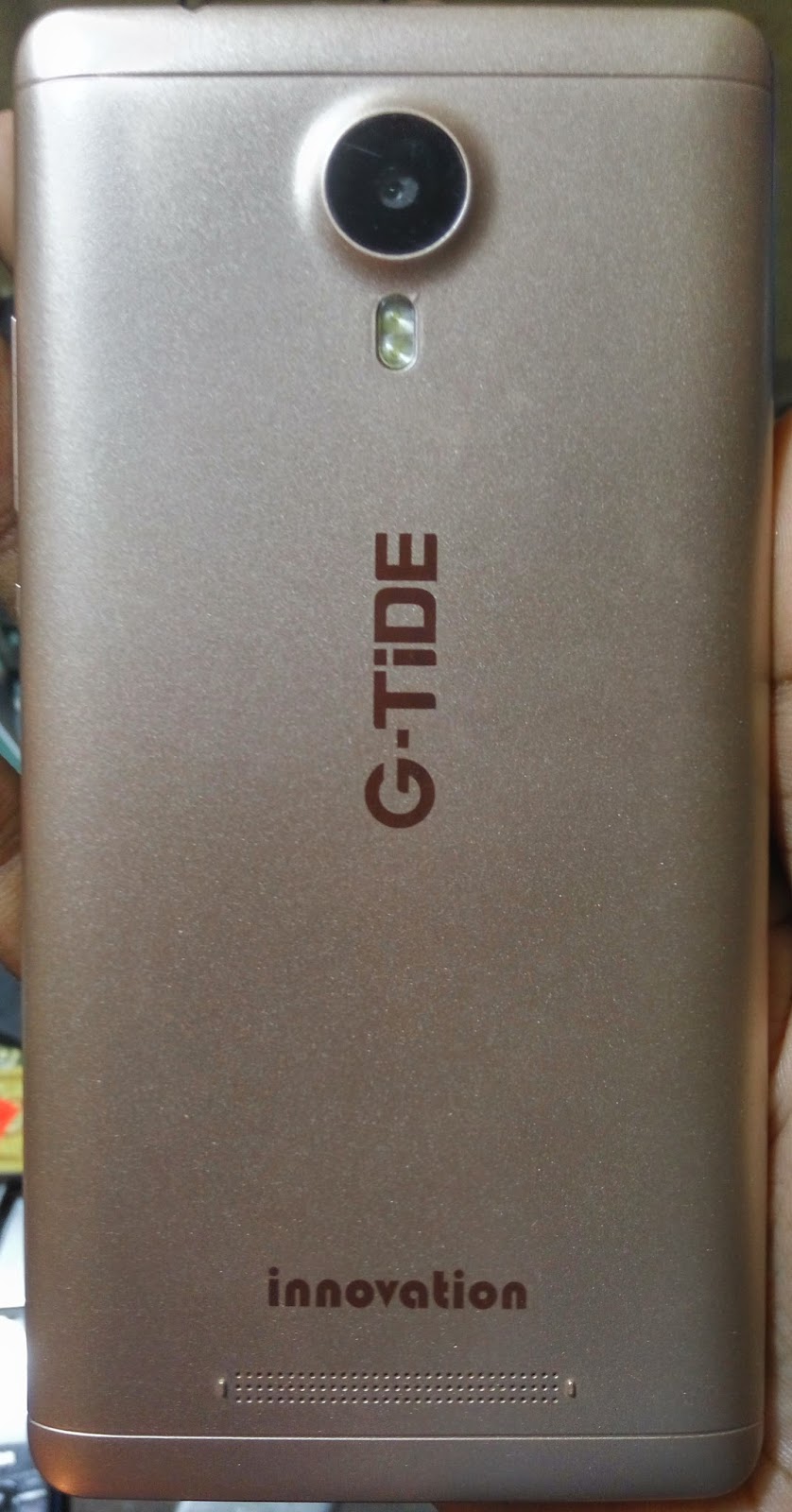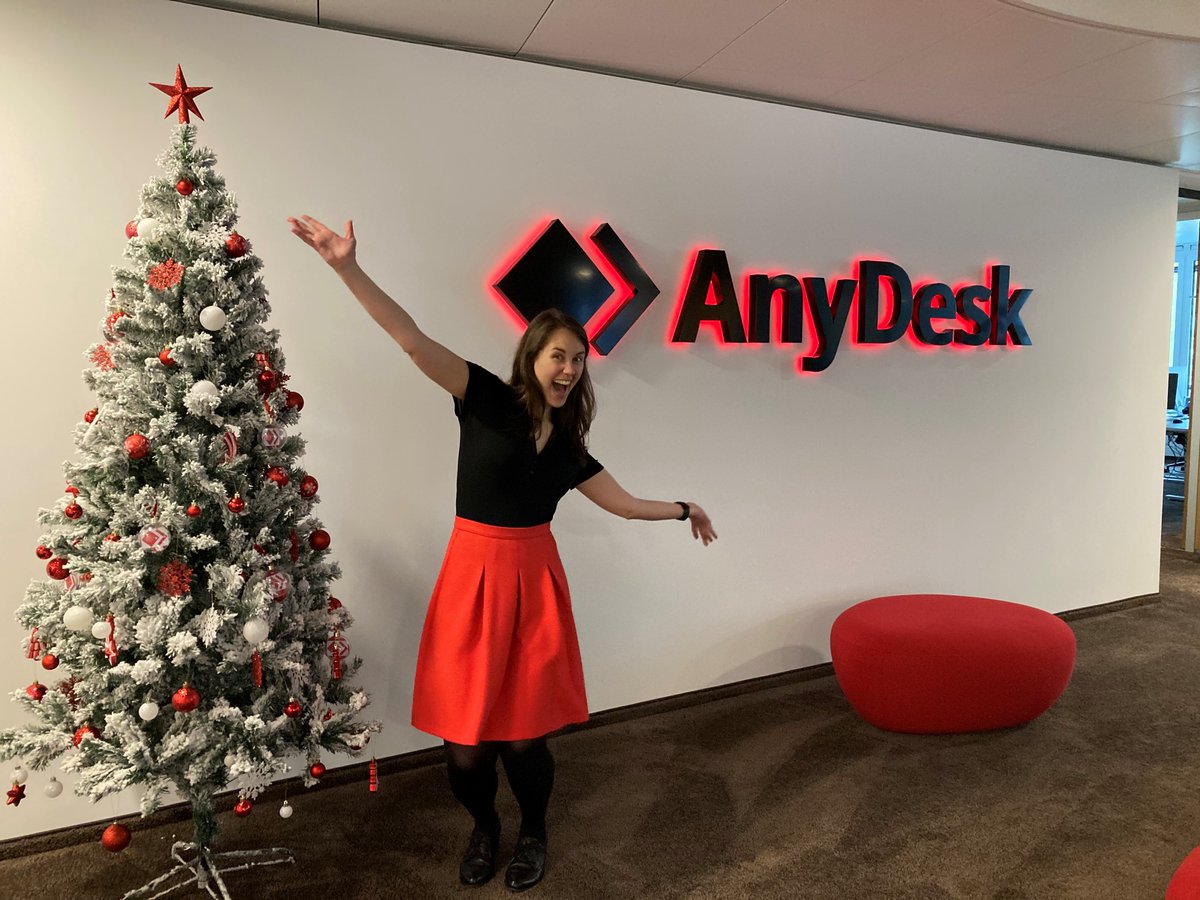The latest tweets from @anydeskapp. AnyDesk before 5.5.3 on Linux and FreeBSD has a format string vulnerability that can be exploited for remote code execution. View Analysis Description. Twitter (link is external) facebook (link is external) linkedin (link is external) youtube (link. Discover AnyDesk - The Remote Desktop App for Android. AnyDesk is the ultimate remote access app for Android-giving you a truly mobile solution to remote desktop connectivity and remote control via android devices. And it’s free for private use! Enjoy seamless connectivity in any setting, for any application.
AnyDesk virus removal instructions

What is AnyDesk?
Similar to TeamViewer, AnyDesk, is a legitimate application that provides remote system control functionality. Recently, however, cyber criminals have started distributing a modified version of AnyDesk using the 'bundling' method, and thus it typically infiltrates without users’ permission.
The modified version is also used to remotely access systems, but without users' consent. The malicious version essentially runs in the background and waits for regular users to leave the computer unattended for a certain period. Once the user is 'away from the keyboard', cyber criminals remotely connect to the system and perform malicious actions. In most cases, these people target users' Amazon accounts. They use saved logins/passwords to sign into the Amazon website and purchase various items and gift cards. Amazon is not the only account at risk. Cyber criminals can do whatever they wish with access to the system (e.g., install other malware, steal logins/passwords, abuse social networks and other personal accounts, etc.) Therefore, the presence of AnyDesk's modified version can lead to high-risk computer infections and serious privacy issues. The desktop shortcut of the malicious version is called 'AnyDask' and its entry in the list of installed programs is 'AnyDeskApp'. If you notice that AnyDesk has infiltrated systems without your consent, or you have downloaded it from a third party source, immediately eliminate it and scan the system with a reputable anti-virus/anti-spyware suite to remove all remnants. AnyDesk should be downloaded from its official website only.
| Name | AnyDesk malware |
| Threat Type | Adware, Unwanted ads, Pop-up Virus |
| Symptoms | Seeing advertisements not originating from the sites you are browsing. Intrusive pop-up ads. Decreased Internet browsing speed. |
| Distribution methods | Deceptive pop-up ads, free software installers (bundling), fake flash player installers. |
| Damage | Decreased computer performance, browser tracking - privacy issues, possible additional malware infections. |
| Malware Removal (Windows) | To eliminate possible malware infections, scan your computer with legitimate antivirus software. Our security researchers recommend using Malwarebytes. |
At time of research, AnyDesk is bundled together with a number of other potentially unwanted programs (PUPs), including Powzip, Smart Application Controller, One System Care, View, and mail.ru. Unlike AnyDesk, these potentially unwanted programs do not provide remote access to victims' computers. They deliver intrusive advertisements (adware), cause unwanted redirects (browser hijackers), and record various sensitive data (virtually all types). Note that PUPs offer 'useful functionality', and yet these programs are designed only to generate revenue for the developers. Thus, claims to provide these functions are merely attempts to give the impression of legitimacy.
How did adware install on my computer?

As mentioned above, AnyDesk is distributed using a deceptive marketing method called 'bundling' - stealth installation of third party applications together with regular software/apps. In most cases, 'bundled' applications are hidden within 'Custom/Advanced' options (or other sections) of the download/installation processes. Developers do not disclose this information properly. Furthermore, users are likely to rush when downloading/installing software and skip steps. In doing so, they expose their systems to risk of various infections and compromise their privacy.
How to avoid installation of potentially unwanted applications?
Poor knowledge and careless behavior are the main reasons for computer infections. The key to safety is caution. Therefore, pay close attention when browsing the Internet and downloading/installing software. Select 'Custom/Advanced' settings, carefully analyze each window of the download/installation dialogs, and opt-out of all additionally-included programs. Software should be downloaded from official sources only via direct download links. Third party downloaders/installers are monetized using the 'bundling' method, and thus these tools should never be used. Be aware that cyber criminals also proliferate PUPs using intrusive advertisements that redirect to malicious websites and execute scripts that download/install PUPs. Most of these ads will seem legitimate, since developers invest many resources into their design, however, they redirect to adult dating, pornography, gambling, and other rogue sites. These ads are often delivered by adware. Therefore, if you experience suspicious redirects, eliminate all dubious applications and browser plug-ins. Having a reputable anti-virus/anti-spyware software installed and running is also paramount. If your computer is already infected with AnyDesk, we recommend running a scan with Malwarebytes for Windows to automatically eliminate this adware.
Deceptive installer distributing modified AnyDesk version (note that it is completely concealed and, therefore, opting-out is impossible):
Instant automatic malware removal:Manual threat removal might be a lengthy and complicated process that requires advanced computer skills. Malwarebytes is a professional automatic malware removal tool that is recommended to get rid of malware. Download it by clicking the button below:
▼ DOWNLOAD MalwarebytesBy downloading any software listed on this website you agree to our Privacy Policy and Terms of Use. To use full-featured product, you have to purchase a license for Malwarebytes. 14 days free trial available.
Quick menu:
- STEP 1. Uninstall AnyDesk using Control Panel.
- STEP 2. Remove adware from Internet Explorer.
- STEP 3. Remove rogue plug-ins from Google Chrome.
- STEP 4. Remove adware-type extensions from Mozilla Firefox.
- STEP 5. Remove malicious extensions from Safari.
- STEP 6. Remove rogue plug-ins from Microsoft Edge.
AnyDesk removal:
Windows 7 users:
Anydesk Twitter Download
Click Start (Windows Logo at the bottom left corner of your desktop), choose Control Panel. Locate Programs and click Uninstall a program.
Windows XP users:
Click Start, choose Settings and click Control Panel. Locate and click Add or Remove Programs.
Windows 10 and Windows 8 users:
Right-click in the lower left corner of the screen, in the Quick Access Menu select Control Panel. In the opened window choose Programs and Features.
Mac OSX users:
Click Finder, in the opened screen select Applications. Drag the app from the Applications folder to the Trash (located in your Dock), then right click the Trash icon and select Empty Trash.
In the uninstall programs window, look for 'AnyDeskApp' and other potentially unwanted programs, select these entries and click 'Uninstall' or 'Remove'.
After uninstalling the potentially unwanted program that causes AnyDesk redirects, scan your computer for any remaining unwanted components or possible malware infections. To scan your computer, use recommended malware removal software.
Malwarebytes checks if your computer is infected with malware. To use full-featured product, you have to purchase a license for Malwarebytes. 14 days free trial available.
Remove adware from Internet browsers:
Video showing how to remove potentially unwanted browser add-ons:
Remove malicious add-ons from Internet Explorer:
Click the 'gear' icon (at the top right corner of Internet Explorer), select 'Manage Add-ons'. Look for any recently-installed suspicious browser extensions, select these entries and click 'Remove'.
Optional method:
If you continue to have problems with removal of the anydesk malware, reset your Internet Explorer settings to default.
Windows XP users: Click Start, click Run, in the opened window type inetcpl.cpl In the opened window click the Advanced tab, then click Reset.
Windows Vista and Windows 7 users: Click the Windows logo, in the start search box type inetcpl.cpl and click enter. In the opened window click the Advanced tab, then click Reset.
Windows 8 users: Open Internet Explorer and click the gear icon. Select Internet Options.
In the opened window, select the Advanced tab.
Click the Reset button.
Confirm that you wish to reset Internet Explorer settings to default by clicking the Reset button.
Remove malicious extensions from Google Chrome:
Click the Chrome menu icon (at the top right corner of Google Chrome), select 'More tools' and click 'Extensions'. Locate all recently-installed suspicious browser add-ons and remove them.
Optional method:
If you continue to have problems with removal of the anydesk malware, reset your Google Chrome browser settings. Click the Chrome menu icon (at the top right corner of Google Chrome) and select Settings. Scroll down to the bottom of the screen. Click the Advanced… link.
After scrolling to the bottom of the screen, click the Reset (Restore settings to their original defaults) button.
In the opened window, confirm that you wish to reset Google Chrome settings to default by clicking the Reset button.
Remove malicious plug-ins from Mozilla Firefox:
Click the Firefox menu (at the top right corner of the main window), select 'Add-ons'. Click 'Extensions', in the opened window, remove all recently-installed suspicious browser plug-ins.
Optional method:
Computer users who have problems with anydesk malware removal can reset their Mozilla Firefox settings.

Open Mozilla Firefox, at the top right corner of the main window, click the Firefox menu, in the opened menu, click Help.
Select Troubleshooting Information.
In the opened window, click the Refresh Firefox button.
In the opened window, confirm that you wish to reset Mozilla Firefox settings to default by clicking the Refresh Firefox button.
Remove malicious extensions from Safari:
Anydesk Twitter App
Make sure your Safari browser is active, click Safari menu, and select Preferences....
In the opened window click Extensions, locate any recently installed suspicious extension, select it and click Uninstall.
Optional method:
Make sure your Safari browser is active and click on Safari menu. From the drop down menu select Clear History and Website Data...
In the opened window select all history and click the Clear History button.
Remove malicious extensions from Microsoft Edge:
Click the Edge menu icon (at the upper-right corner of Microsoft Edge), select 'Extensions'. Locate all recently-installed suspicious browser add-ons and click 'Remove' below their names.
Optional method:
If you continue to have problems with removal of the anydesk malware, reset your Microsoft Edge browser settings. Click the Edge menu icon (at the top right corner of Microsoft Edge) and select Settings.
In the opened settings menu select Reset settings.
Select Restore settings to their default values. In the opened window, confirm that you wish to reset Microsoft Edge settings to default by clicking the Reset button.
- If this did not help, follow these alternative instructions explaining how to reset the Microsoft Edge browser.
Summary:
Commonly, adware or potentially unwanted applications infiltrate Internet browsers through free. software downloads. Note that the safest source for downloading free software is via developers' websites only. To avoid installation of adware, be very attentive when downloading and installing free software. When installing previously-downloaded free programs, choose the custom or advanced installation options – this step will reveal any potentially unwanted applications listed for installation together with your chosen free program.
Removal assistance:
If you are experiencing problems while trying to remove anydesk malware from your computer, please ask for assistance in our malware support forum.
Post a comment:
If you have additional information on anydesk malware or it's removal please share your knowledge in the comments section below.

No email or registration required!
AnyDesk is the ultimate remote access app for Android-giving you a truly mobile solution to remote desktop connectivity and remote control via android devices. And it’s free for private use! Enjoy seamless connectivity in any setting, for any application. Establish remote desktop links with your office. Use AnyDesk to administer external support for customers.
Connectivity wherever you are! With AnyDesk, you get unparalleled performance, reliable security, and stable connectivity. Our remote desktop app is easy to set up and use and has all the features you need without being cluttered. Thanks to flexible license models, AnyDesk can be easily customized to your specific workflow.
Peerless Performance from the AnyDesk Remote Desktop Application for Android
AnyDesk offers high frame-rates, incredibly low latency, and efficient bandwidth usage to your Android remote control desktop, thanks to our unique DeskRT codec that lies at the heart of AnyDesk.
By employing the banking-standard TLS 1.2 encryption technology, AnyDesk offers maximum security. RSA 2048 asymmetric key exchange encryption additionally verifies every connection. With AnyDesk On-Premises, you can even use your own network by installing the simple network-appliance on your own server.
Intuitive and stable! The Android version of the AnyDesk remote desktop app integrates seamlessly with your device. Features are constantly updated.
Our light AnyDesk remote desktop app ensures fast downloads and keeps file sizes small. Download it directly from the Google Play store for increased security!
Be guided through the most important features directly within the app. You’ll be up and running in no time!
Version 6.1.1214 Apr 2021
- Added support for new plugins:
Added support for new custom plugins.
3 Mar 2021
- Support for different configuration channels:
Support for configuration via App Restrictions (e.g. Microsoft Intunes). - Image quality bugfix:
Fixed remote image artefacts. - Bugfixes:
Minor improvements and fixes.
22 Jan 2021
- Plugin management:
Manage plugin through AnyDesk app to reduce number of launcher icons.. - Crash fix:
Fixed crash in session recording settings.
18 Jan 2021
- Auto switch to monitor with focus:
Automatically switches to remote monitor that has the focused window. - Lock remote desk on session end:
If supported by the remote desk, automatically locks remote desk when the session ends. - Auto disconnect:
Disconnects incoming connections after a configurable time of inactivity. - Support for high quality screen transmission:
See setting Preserve details for more information. - Compatibility with Samsung devices:
Fixed injection of wrong touch coordinates on Samsung devices. Improved injection of special characters on Samsung devices. - Bugfixes:
Fixed a couple of minor bugs.
6 Oct 2020
- New plugin version notifications:
Added notification when a new plugin version is available. - Converting mouse events:
Added option to convert mouse events to touch events. - Android 10 and newer compatibility:
Fixed key event transmission on Android 10 and higher. - Bugfixes:
Fixed a couple of minor bugs.
9 Sep 2020
- Edit mode for Address Book:
It is now possible to add and remove address books and entries there. - Search function improved:
Searching for multiple words in speed dial and address book. - Wake-on-Lan feature simplified:
Wake on LAN now discovers wakable devices in network. No need to configure the wake source anymore. - Improved iOS support:
Support for improved connections to iOS devices. - Bugfixes:
Fixed a couple of minor bugs.
28 Jul 2020
- Bugfix:
Fixed crash on Android 4 and 5.
22 Jul 2020
- Bugfix:
Changed the default setting for interactive access back to When AnyDesk is visible.
14 Jul 2020
- Access Control List:
Implemented Access Control List. - Address Book:
Implemented read only Address Book. - Flexible Session Recordings:
Session Recordings can now be started and stopped at any time. - Wake-on-Lan support:
Android device can now be used to wake other devices in the same network. - Settings security:
Settings can be now be protected by device security. - Scrolling in touchpad mode:
Fixed 3-finger scroll in touchpad mode. - Bugfixes:
Fixed a couple of minor bugs.
24 Jun 2020
- AndroidTV support:
Improved support on AndroidTV (opening settings).
11 May 2020
- Speed dial items:
Improved input validation when renaming speed dial items. Fixed shadows on speed dial items. - Improvements for AndroidTV:
Improved link handling on AndroidTV. - Various other improvements:
Improved file transfer. Improved online state monitoring when app is in background.
20 Apr 2020
- Kiosk mode:
Support for kiosk mode if whitelisted. - Discovery feature security:
Significantly improved security of Discovery feature. - Speed dial items:
Replaced overflow button on speed dial items with long-press action. - Bugfixes:
Fixed a couple of minor bugs.
25 Mar 2020
- New plugin:
Added plugin for Android devices.
10 Dec 2019
- Bugfixes:
Fixed a couple of minor bugs.
5 Dec 2019
- Bugfixes:
Fixed a couple of minor bugs.
19 Nov 2019
- Bugfixes:
Fixed initial file transfer button visibility.
14 Nov 2019
- New features:
Support for multi-touch events, privacy feature settings, VPN, seeking in seesions player and support for dark mode. - Bugfixes:
Fixed clipboard file transfer, improved network connection stability, keyboard and dpad navigation, other minor improvements and bugfixes.
9 Sep 2019
- New plugin:
Added plugin for HTC devices.
22 Aug 2019
- New features:
Improved speed on some devices, added color for speed dial items, added online state to discovered items. - Bugfixes:
Fixed remote image artifacts, issue with incoming connections, other minor improvements and fixes.
6 Aug 2019
- New plugin:
Added plugin for Savortex devices. - Bugfixes:
Fixed vulnerability in session playback that could lead to files getting overwritten.
11 Jul 2019
- Fixed crashes:
Fixed crashes due to invalid translations in some languages. - Bugfixes:
Fixed some minor bugs.
27 Jun 2019
- Fixed crashes:
Fixed several crashes due to invalid format in ukrainian translation and concerning stopping service. - Bugfixes:
Fixed some minor bugs.
6 Jun 2019
- New features:
Unattended access, Kickout feature and improved speed. - Fixed crash and bugs:
Fixed crash in incoming connections and made minor improvements and fixes.
2 Apr 2019
- Remote control speed:
Improved remote control speed. - Showing pointer:
Showing pointer when remote control is possible and also on pointer move. - Incoming connections:
Added default permissions for incoming connections in settings. - Discovery settings:
Added settings for discovery. - Fixed configuration:
Fixed configuration for interactive access. - Fixed lockups:
Fixed gesture detection lockups. - Improved stability:
The stability has been improved.
21 Mar 2019
- User interface:
Improved user interface. - Tutorial:
Showing a tutorial on first start. - Auto discovery:
Auto discovery of other AnyDesk instances in local network. - Full screen mode:
Toggle full screen mode. - Fixed OpenGL bug:
Fixed OpenGL bug that could lead to graphic rendering errors. - Fixed file transfer:
Fixed crash in file transfer. - Fixed own address card visibility:
Fixed own address card visibility issue with custom client. - Fixed speed dial items:
Fixed deleting wrong speed dial items.
9 Jul 2018
- Improved stability:
The stability has been improved.
2 Jul 2018
- Added SpeedDial Feature:
Favourites can be set in speed dial. - Address filter added:
Search filter for speed dial. - Alias now available on Android:
Custom Alias can be registered once in the settings. - SpeedDial features enhanced:
Showing Alias and ID in SpeedDial menu and own address field. - Enhanced connectivity:
Fixed error when terminating an incoming connection. - Audio settings optimized:
Audio permissions are only requested when this feature is enabled in the settings.
11 Jun 2018
- Status available in the SpeedDial:
Showing online states of session partner in speed dial. - AnyDesk now displays online status:
Showing AnyDesk connection state. - Fixed connection error:
Fixed pointer position on incoming connections. - Long life:
Reduced battery drain. - Enhancements:
Improved stability.
16 May 2018
- Fixed Bug:
Fixed automatic language selection. - Fixed Bug:
Fixed black screen on some devices. - Fixed Bug:
Improved stability.
9 May 2018
- New Feature:
Completely exit app when exit via back button when no connection active. - Fixed Bug:
Changing user picture now immediately takes effect. - Fixed Bug:
Improved connection to terminal server. - Fixed Bug:
Improved reconnect on network change. - Fixed Bug:
Fixed keyboard action in password dialog. - Fixed Bug:
Improved double click. - Fixed Bug:
Improved stability.
By downloading and using AnyDesk, you accept our license agreement and our privacy statement.
Please consider taking our survey to help us make AnyDesk even better!
